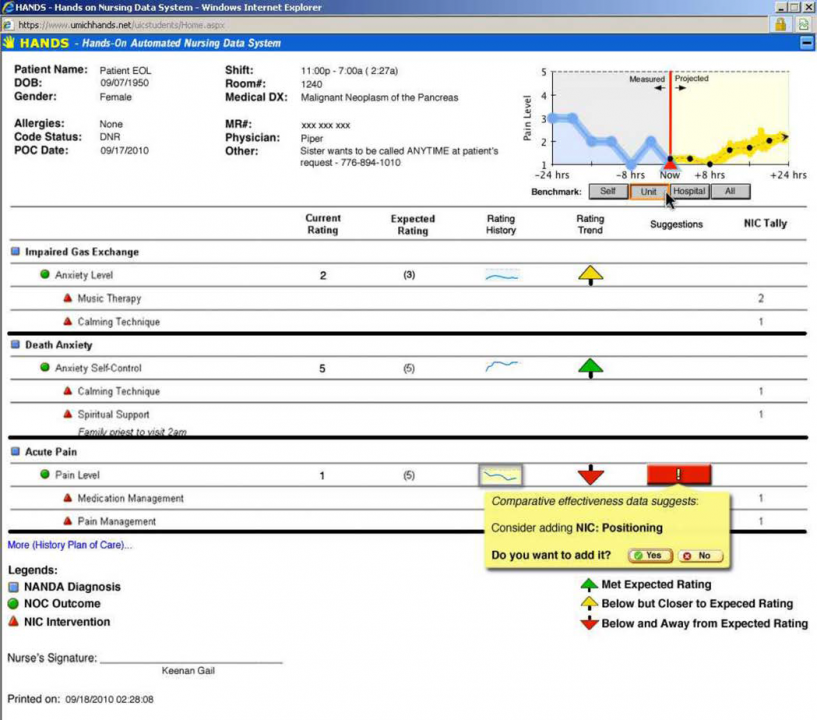|
|
||||||||||||||||||
Data Mining Nursing Care Plans of End of Life Patients: A Case Study to Improve Healthcare Decision Making
Authors: Al-masalha, F., Xu, D., Keenan, G., Khokhar, A., Yao, Y., Chen, Y., Johnson, A., Ansari, R., Wilkie, D.
Publication: International Journal of Nursing Knowledge, vol 2, no 1, pp. 15-24 URL: https://doi.org/10.1111/j.2047-3095.2012.01217.x Pain management of end of life patients (EOL) (n=596 episodes) is examined using statistical and data mining processes of the HANDS database of care plans coded with NANDA-I, NOC, and NIC (NNN) terminologies. HANDS episode data (episode =care plans updated at every handoff on a patient while staying on a hospital unit) were gathered in 8 units located in 4 different health care facilities (total episodes = 40,747; EOL episodes = 1,425) over two years. Results show the multiple discoveries such as EOL patients with hospital stays (< 72 hrs.) are less likely (p<0.005) to meet the pain relief goals compared to EOL patients with longer hospital stays. The study demonstrates a major benefit of systematically integrating NNN into electronic health records. Keywords: Data mining; plan of care; electronic health record; end of life hospital care; pain Date: February 1, 2013 Document: View PDF |